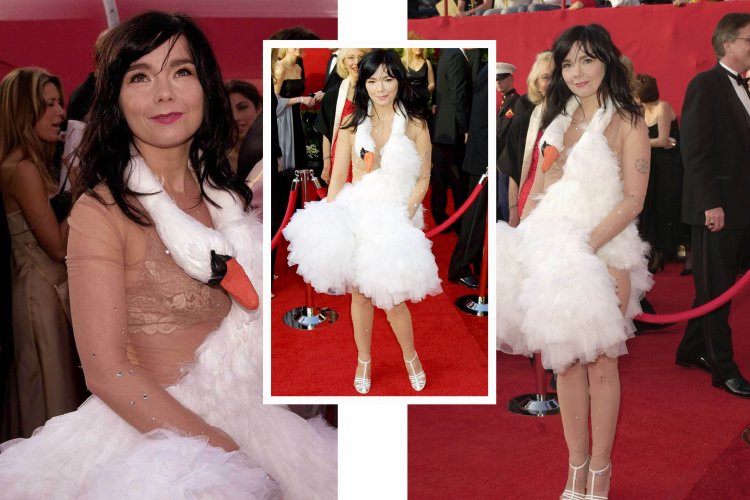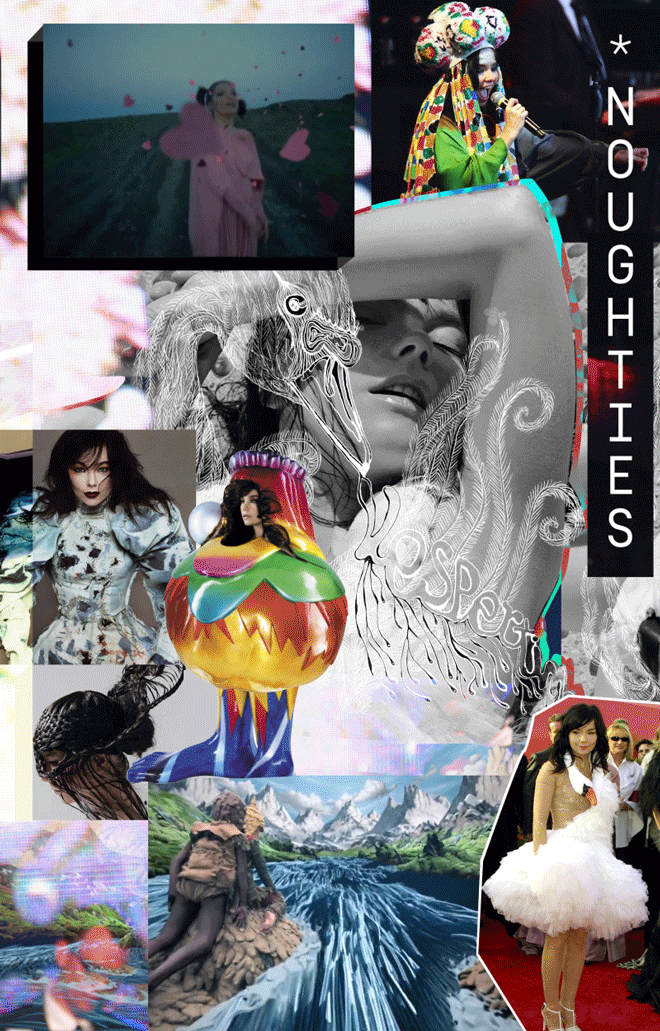Learn more about Björk: facts about icelandic actress, poet/writer

It’s difficult to find a category for Bjork Gudrrmndsdottir. Is she a singer? Of course. An artist? Definitely. An actress? Certainly. Bjork is an ENTIRE PHENOMENON, an entire universe, in herself
AT THE VERY END of the 70s a small pink-cheeked girl in a tom sweater and boy’s haircut stood on the stage of an underground club in Reykjavik and hammered furiously on a drum. She looked 7years old, but in fact was already 13. She had put stage fright behind her: before forming her first punk bank with her equally wild girlfriends, she had already managed to record - at 11! - her debut album. With folk songs and rehashes of Beatles songs in Icelandic, the album went platinum in Iceland, but Bjork herself recalls it with embarrassment. “It was not my songs, it was not me at all,” she says, apparently continuing to excuse herself, in spite of her 51 years of age and megastar status. As everyone did at the time, Bjork punked around at the start of the 80s - and did so with great energy. By 1986 she was into her third band, which she set up with her husband Thor Eldon: The Sugarcubes. The band made a noise far beyond Scandinavia, attracting the attention of major European labels. So it’s hardly surprising that when the band spilt up - Bjork and Thorn had by then gone their separate ways, but had a son, Sindri, to look after - Bjork headed straight for London.

The three years she spent as a neighbour of the Queen were very important for Bjork. It was as if the eccentric Icelander was just what everyone had been waiting for. She made the acquaintance of Nellee Hooper, producer of Massive Attack, and recorded her first solo album, Debut. It immediately conquered all the charts: MTV had her b/w clip Big Time Sensuality on rotation. In it a funny freckled girl with hair in numerous knots dances on a platform as it moves through the city. She pierces the air with her voice - which is quite unlike any other, fluctuating from the childish to the animal-like before breaking into an infernal roar. The album sparkles with energy and is dance, trip-hop, and alternative at the same time. The video Human Behavior, shot by the then little-known French director Michel Gondry, immediately became a cult classic. It was now clear that Bjork was something radically new. There had never been music like this. No one had ever written texts like these - so strange, naive, and alive.
Bjork soon started workingwith the icons of the age - recording tracks with Tricky, performing with PJ Harvey, writing soundtracks for films, and even writing a song. Bedtime Stories, for Madonna. She says of her London period: “After The Sugarcubes I felt a mixture of freedom and fear.” And in fact she had reason to be afraid: Ricardo Lopez, an eccentric fan, became upset when he learnt she was dating Goldie and sent his idol an acid bomb through the post, before committing suicide immediately afterwards. The parcel was intercepted, but the incident so shook Bjork that she ran away to Spain. There she started writing more disturbing, more intimate songs - which went into her new album, Homogenic. In it Bjork gave full rein to her passion for experimentation: inspired by the rhythms of Iceland’s geysers, she mixed the vibrations of icebergs with electronic beats and ajapanese accordion, invented what she calls ‘Icelandic techno’, and won over the hearts of the music industry’s most arrogant snobs such as Radiohead.

At the same time, Bjork appeared in Lars von Trier’s Dancer in the Dark - for which she also wrote all the songs - winning Best Actress at Cannes. In her next album, Vespertine, she went deeper and deeper into experimental territory - urging the musicians in the Matmos project to search out the strangest new sounds. This was followed by Medulla, an album which consists 99% of vocal modulations - from Bjork, beatboxers, throat singers, and Faith No More’s Mike Patton. In Volta she surrounded herself with celebrities under the direction of celebrity producer Timbaland and again made it into all the charts. Then she once more parted company with her wider fan base, making Biophilia, an album which is not only difficult to categorize in terms of genre, but cannot even be considered an ordinary music release. Bjork calls it a ‘scientific musical’. This project became part of the permanent exhibition at MOMA and of the school programme for the city of Reykjavik. Next came Vulnicura - a very personal album in which Bjork gave free expression to all the emotions arising from her difficult split with her second husband, Matthew Barney. The singer honestly admitted that she found this album hell - like the divorce itself. Perhaps partly for this reason she has called her latest release, Utopia, which comes out this month, ‘heaven’. “It’s kind of my Tinder profile,” she laughs (all the songs on this album will be about being in love).
Over the 40 - 40! - years of her music career Bjork, it seems, has never looked back and never been in thrall to her audience. She could have stayed on MTV and continued turning out hits, but has never taken the easy road - opting for thorny bypaths instead It's not that she goes against the current trends: she simply exists in a parallel dimension of her own.” ♦

{ (jewel)}
